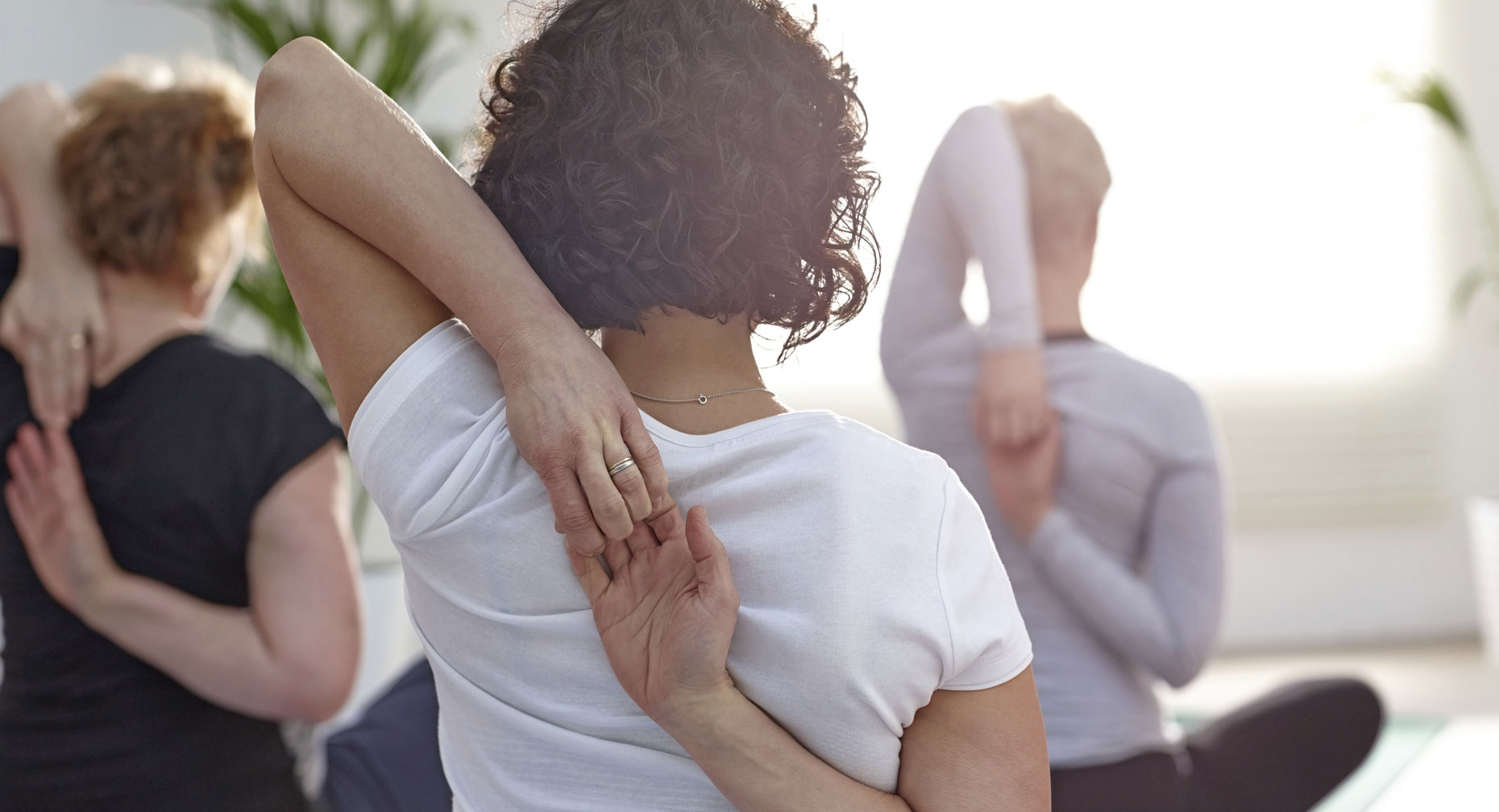5 Types of Exercise to Beat Headache Pain

Answer a few questions and we'll provide you with a list of primary care providers that best fit your needs.
Good things come to those who exercise, including headache sufferers.
Exercise can release tension in the body and have a positive impact on body chemistry (like boosting oxygen levels), which in turn can decrease the risk of tension headaches and migraines.
Here are some recommendations on the kinds of exercise and body work that can bring relief or make headaches less likely to occur:
Yoga
Tightness in your muscles, poor posture and stress can make headaches worse, according to the American Headache Society (AHS).
Yoga can help by improving flexibility and posture, and relaxing tight muscles. Research indicates that yoga also helps balance the mind, body and spirit, which can have a positive effect on mood, anxiety and stress.
There are many different forms of yoga. Most combine breathing techniques with body movement and holding postures. Restorative yoga, in particular, is a relaxing form that combines deep breathing with poses that are fully supported by props (blankets, mats, blocks, etc.) Restorative yoga may be especially useful for headache sufferers. On the other hand, if you are new to yoga, you may prefer the forms of yoga that move from one posture to the next without holding or straining for long periods of time.

Yoga classes are widely available at recreation centers and specialty yoga centers, on DVDs and online. Before embarking on a program:
- Speak with your doctor first
- Start with a beginner’s class
- Find an instructor who knows how to modify poses to meet your medical needs
- Let your instructor know about your condition
- Let your instructor know if you experience an increase in pain with certain poses
- Note that inversions (poses in which your head is lower than your heart) may be difficult for individuals with headache
Stretching, Deep Breathing and Muscle Relaxation
If yoga isn’t your thing, then simply stretching, deep breathing and/or practicing progressive muscle relaxation can help headache sufferers by improving circulation and reducing muscle tension, according to the American College of Sports Medicine (ACSM).
- Stretching: Stretch 10 minutes a day, paying particular attention to your arms, legs and neck. Not only does this ease tension, it also promotes greater mind/body awareness, because completing each stretch requires mindfulness of your bodily positions, breathing and tension control.
- Deep breathing: Many of us have never learned the correct way to use our diaphragm for deep breathing. Also, we often don’t notice what happens to our breath when we are stressed — we either hold it, or take quick, shallow breaths. But it’s during times of stress that our muscles need oxygen the most.
Put one hand on your abdomen and the other hand on your upper chest. If you are taking a proper deep breath from the diaphragm — the thin muscle that separates the chest and abdominal cavities — the hand on your abdomen should move out while inhaling. While exhaling, the hand on your chest should remain relatively still. Once you’re comfortable with the breath cycle, commit to taking several minutes per day to simply concentrate on your breathing.
- Progressive muscle relaxation: In this technique, you tense and then release key muscle groups. Since muscle tension accompanies anxiety, learning to relax the muscles may reduce the emotional and/or physical stress that sometimes leads to headaches.
Sit or lie in a comfortable position. With your eyes closed, tense the muscles in your legs for 10 seconds, then release the tension for 20 seconds, noticing the difference between the feelings of the tension and relaxation. Try this with other muscle groups, particularly those in the abdomen, chest, arms and face. Find time to practice once a day for 10 minutes. The technique becomes more effective with practice, so stay committed!
Cardiovascular Exercise
Cardiovascular or aerobic exercise (exercise that gives your heart and lungs a workout) reduces stress, anxiety, depression and anger — all of which are headache triggers, according to the ACSM. It also helps you sleep at night (lack of sleep is another trigger) and causes your body to release endorphins, which are natural painkillers.
Tightness in your muscles, poor posture and stress can make headaches worse.
The type of exercise you choose, and how aggressively you pursue it, depends on a number of factors, including your current state of fitness. ACSM recommends 150 minutes per week of moderately intense activity for most people, but you should talk with your doctor about what level is most appropriate for you.
What if Exercise Triggers My Headaches?
Instead of avoiding exercise, the American Headache Society recommends developing a preventive exercise plan if exercise seems to make your headaches worse. This plan includes:
- Staying hydrated before, during and after exercise. Lack of fluids in your body may trigger a migraine. Signs of dehydration include a dry mouth, and not sweating when you are exercising at a moderate to vigorous pace.
- Eating sufficient food about 90 minutes before exercising. You need to provide your body with a source of energy, because exercise zaps your blood sugar levels, which in turn can trigger headaches. Foods with protein, such as a protein bar or nuts, are good snacks prior to exercise.
- Warming up. Don’t jump in and start working out vigorously. Walk slowly for at least five minutes before walking quickly or jogging, and stretch and/or gently lift light weights before intense resistance training.
NOTE: In rare instances, a headache during exercise can be a sign of a more serious problem. Call 911, and go to the nearest emergency department if you get a headache during exercise and one of the following apply:
- You have never had a headache during exercise before.
- You had an exercise headache before, but this one is different in the way it feels, in the location of the pain, or in other ways.
- You injure your head during exercise, which results in a headache.
Whether you choose to run, swim, jog, practice yoga or undertake any number of other activities, make a plan for yourself that includes activities that you enjoy and are convenient. This makes it more likely that you’ll stick to it!
Answer a few questions and we'll provide you with a list of primary care providers that best fit your needs.
Source: American Headache Society; American College of Sports Medicine




